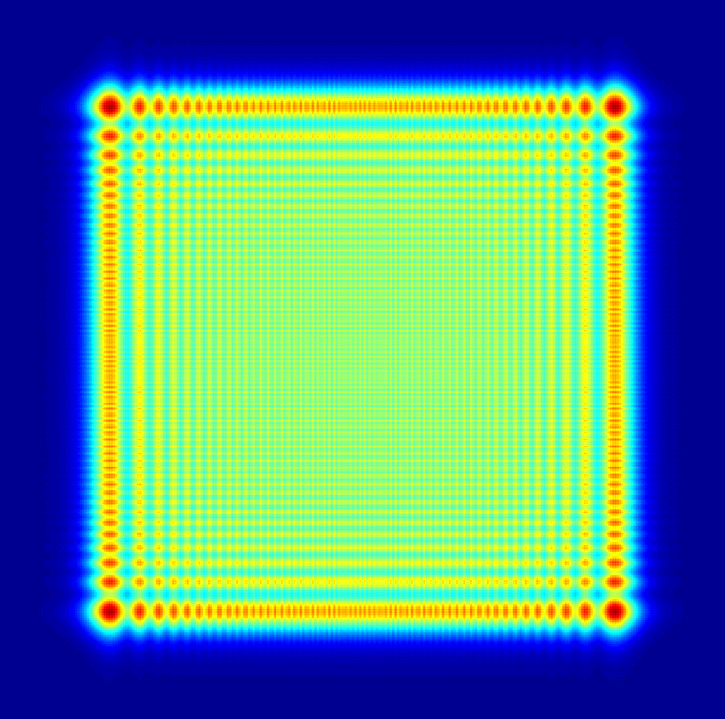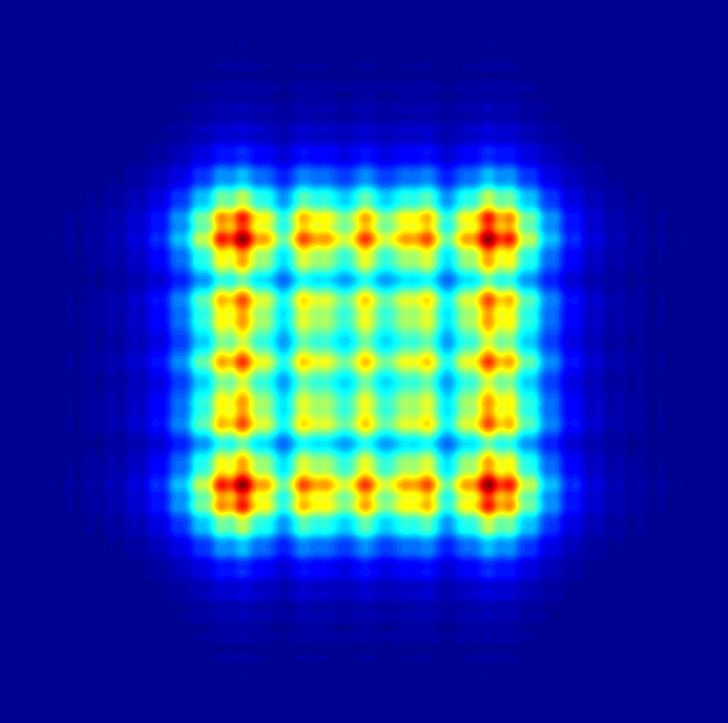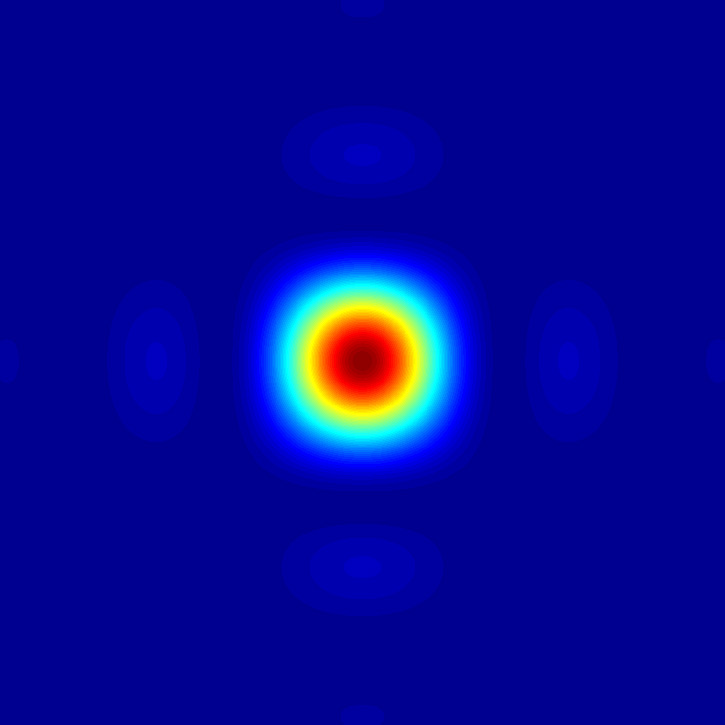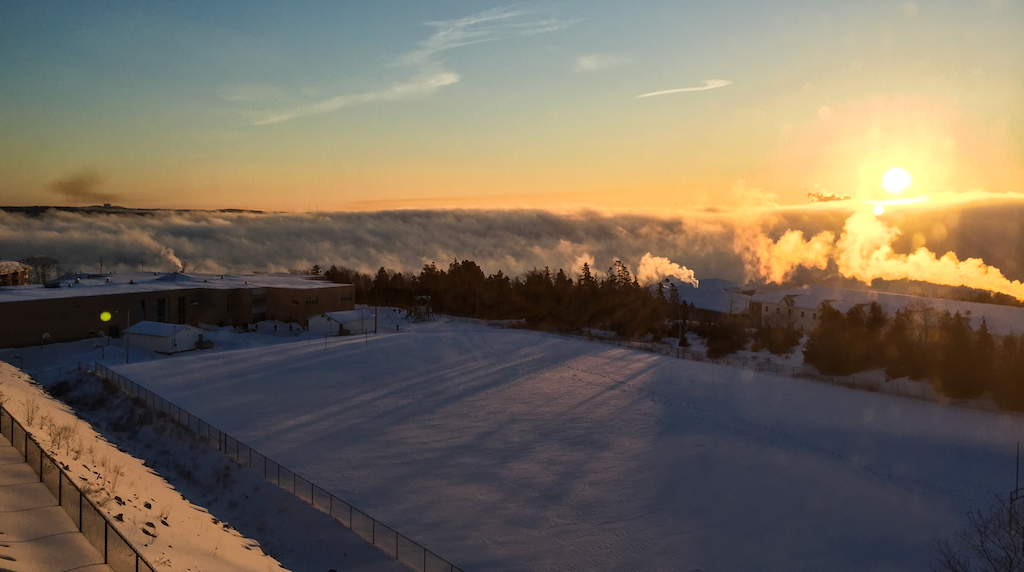Fun Science / Diffraction
The images below show what happens when light goes through a square aperture. The intensity pattern observed varies with the distance from the aperture: close to the aperture the pattern looks like the aperture itself, and as we move further away it starts to Fourier-transform, producing some intermediate images. Ultimately, far away from the aperture the image observer is the Fourier transform of the aperture itself. Nature has a way to perform the operation faster than we humans could ever conceive: at the speed of light!
Here is the intensity pattern close to the aperture. The phenomenon is called Fresnel diffraction. We can clearly see the square shape of the original aperture, but it is slightly distorted since the light is mixing (superposition of waves that originate at the aperture according to the Huygens principle).

In the next image, we observe the intensity pattern further away from the aperture. The light starts Fourier-transforming, as light and darkness fight each other as they propagate away from the aperture: light goes into shadow and shadow goes into light. The original shape of the square aperture is still distinguishable but heavily distorted.

Finally, Far away from the aperture we have the so-called Fraunhofer diffraction. What is ultimately observed is the Fourier transform of the aperture; in the case of the square aperture the Fourier transform are sinc functions in each of the two space directions, hence the small lobes that appear next to the central one.

